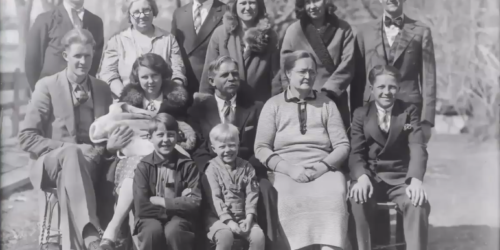Case Studies: Learning from the Best
One of the unique features of The Family History Guide is that it brings some of the best tools for family history research into one easy-to-use location. Learning from the best is something that people have done for ages: if you want to become a great painter or musician, you study their works to help you develop your own style. Certain things about what they do and how they do it will resonate with you, and you’ll adapt and absorb them into your own approach.

So why would it be any different in learning essential genealogy skills? Let’s see where we can find these skills, using The Family History Guide as our base for exploration.
(Note: It’s handy to have a good foundation in your skills before studying the works of the “masters” – that way, you’ll pick up more in less time.)
Our first stop is Project 4 in The Family History Guide. (You can use any of the Learning Paths – FamilySearch, Ancestry, MyHeritage, or Findmypast.) Jump to Goal 6, Choice C (we’re using the FamilySearch path here, but the result is the same). Open the last article, “Genealogy Case Studies” by Kimberly Powell.
 This article gives you a good overview of what case studies are about, and how they can help you in the research process. But instead of channeling the detective work of Sherlock Holmes, you can study the genealogy techniques of Elizabeth Shown Mills, Thomas Jones, Michael John Neill and others. (By the way, the link to Michael’s blog should be http://casefileclues.genealogytipoftheday.com/ – the article has an old link.)
This article gives you a good overview of what case studies are about, and how they can help you in the research process. But instead of channeling the detective work of Sherlock Holmes, you can study the genealogy techniques of Elizabeth Shown Mills, Thomas Jones, Michael John Neill and others. (By the way, the link to Michael’s blog should be http://casefileclues.genealogytipoftheday.com/ – the article has an old link.)
In the article, scroll down and open “Fishing for Clues in John Lake’s Estate“. This case study shows the clues that an experienced genealogist would look for when reviewing a seemingly ordinary estate record. Check out “The Widow Gets a Bargain” for an interesting example of reading between the lines with probate situations.
 Next, let’s take a quick trip to the Sweden country page and scroll down to Goal 1, Choice C. The first item is a case study from FamilySearch that shows how to go beyond parish records in researching a family – in this instance, using tax list records. I like how the case study is divided into logical steps that build the foundation for finding the research outcomes.
Next, let’s take a quick trip to the Sweden country page and scroll down to Goal 1, Choice C. The first item is a case study from FamilySearch that shows how to go beyond parish records in researching a family – in this instance, using tax list records. I like how the case study is divided into logical steps that build the foundation for finding the research outcomes.
You can find links to other case studies throughout The Family History Guide. Here are a few of them:
- Genealogy Brick Wall Case Study (DNA Project, Goal 5, Choice C)
- Location, Location, Location (U.S. Country page, Goal A2, Choice A)
- Using Danish Church Records (Denmark page, Goal 3, Choice A)
- Finding Records of Your Ancestors in Scotland (Scotland page, Goal 1, Choice C)
I hope this brief exercise piqued your interest in how great genealogy minds think, and how their case studies can help you unlock your own family history doors of discovery.





